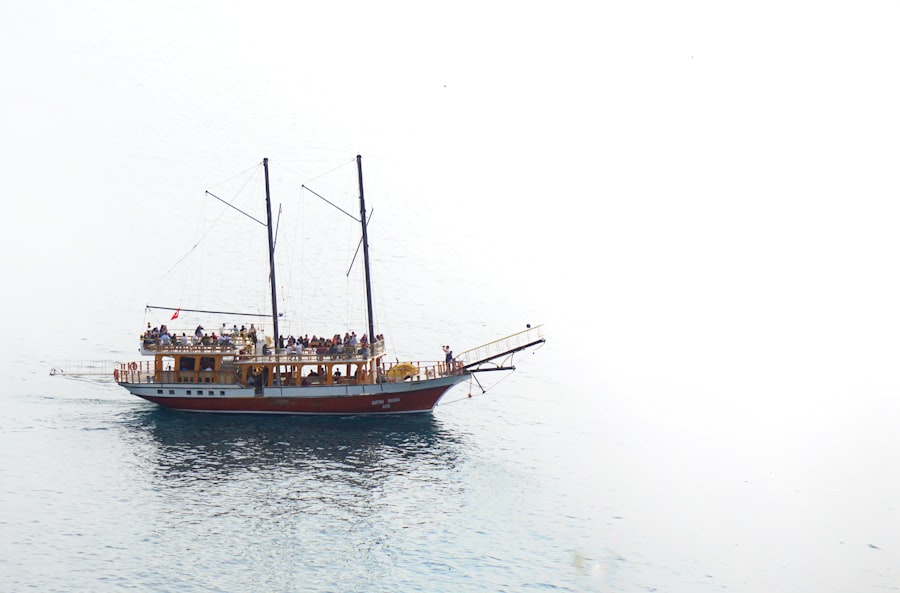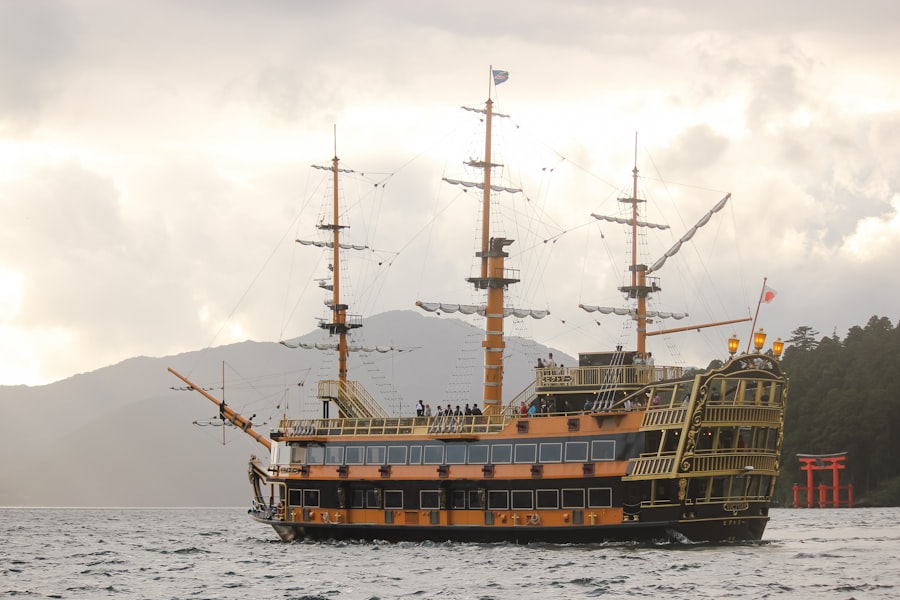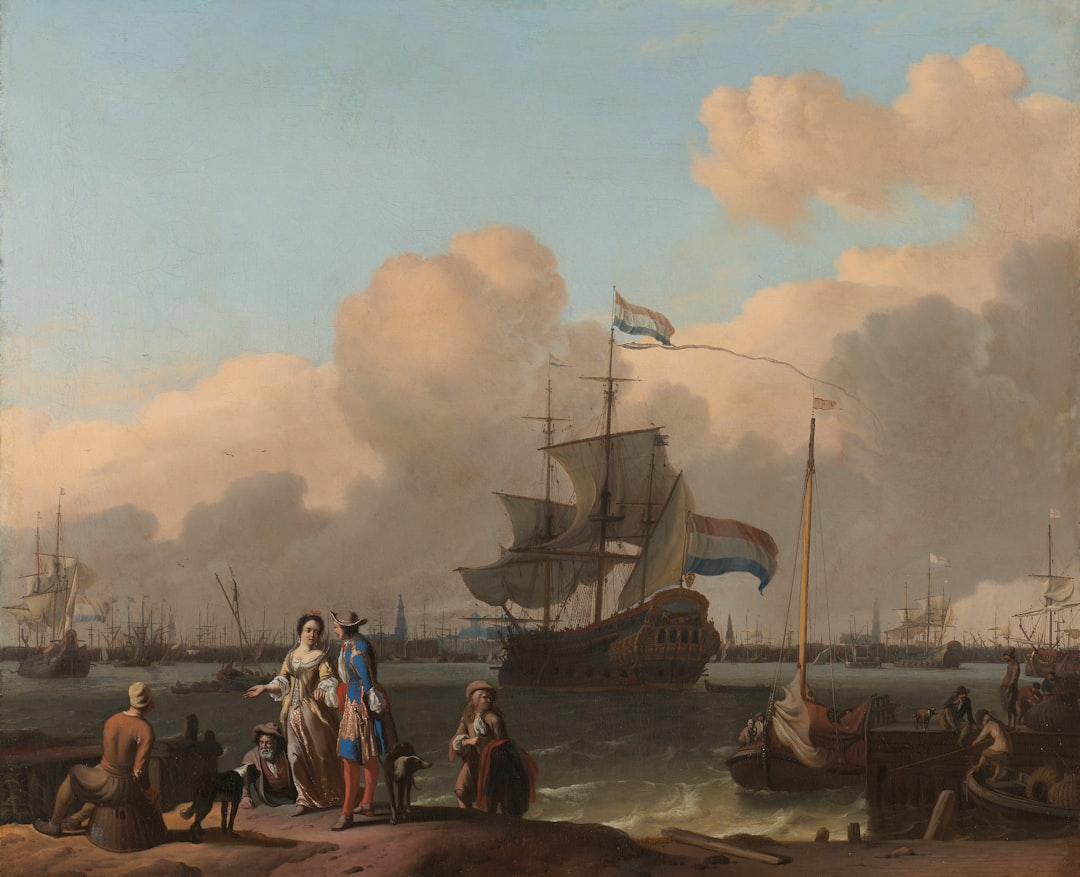The history of Dutch explorations in the Drake Passage is a fascinating tale that intertwines maritime ambition with the quest for knowledge. During the 17th century, the Dutch Republic emerged as a formidable maritime power, driven by trade and exploration. The Drake Passage, named after the English explorer Sir Francis Drake, became a focal point for navigators seeking new routes to the riches of the East Indies.
The Dutch were particularly interested in this treacherous stretch of water, as it offered a potential shortcut to the lucrative spice trade. Their expeditions were not merely commercial ventures; they were also driven by a spirit of scientific inquiry and a desire to map uncharted territories. The first significant Dutch expedition to the Drake Passage occurred in the early 1600s, when explorers such as Willem Schouten and Jacob Le Maire set sail from the Netherlands.
Their journey was marked by perilous conditions and unpredictable weather, yet it laid the groundwork for future explorations. Schouten and Le Maire’s successful navigation through the passage not only demonstrated the feasibility of this route but also sparked interest among other Dutch navigators. The passage became a symbol of Dutch maritime prowess, showcasing their ability to conquer the challenges posed by nature and rival nations alike.
Key Takeaways
- Dutch explorations in the Drake Passage date back to the 17th century, with navigators like Willem Schouten and Jacob Le Maire making significant contributions to the understanding of this treacherous waterway.
- Dutch explorers faced numerous challenges in navigating the Drake Passage, including extreme weather conditions, treacherous currents, and the threat of icebergs.
- Key discoveries made by Dutch explorers in the Drake Passage include the identification of Cape Horn and the mapping of new routes for trade and exploration.
- The impact of Dutch explorations on navigation in the Drake Passage was significant, as their findings and maps provided crucial information for future expeditions and trade routes.
- Notable Dutch explorers who explored the Drake Passage include Willem Schouten, Jacob Le Maire, and Abel Tasman, whose contributions to exploration and cartography were groundbreaking.
- The Dutch East India Company played a crucial role in funding Drake Passage expeditions, providing financial support and resources for explorers to undertake their journeys.
- Dutch explorers made significant contributions to cartography in the Drake Passage, mapping previously uncharted territories and providing valuable information for future navigators.
- Scientific research conducted by Dutch explorers in the Drake Passage included studies of marine life, weather patterns, and geological formations, contributing to a better understanding of the region’s ecosystem.
- Cultural and environmental encounters in the Drake Passage from Dutch perspectives shed light on the interactions between explorers and indigenous peoples, as well as the impact of exploration on the local environment.
- The legacy of Dutch explorations in the Drake Passage continues to influence modern-day expeditions and research, with Dutch expertise and knowledge contributing to ongoing exploration and understanding of the region.
Challenges Faced by Dutch Explorers in Navigating the Drake Passage
Navigating the Drake Passage was fraught with challenges that tested the mettle of even the most seasoned explorers. The passage is notorious for its turbulent waters, strong currents, and unpredictable weather patterns. Dutch explorers often faced fierce storms that could arise without warning, making navigation perilous.
Many expeditions encountered difficulties that led to shipwrecks or forced them to turn back, underscoring the dangers inherent in traversing this maritime corridor. In addition to natural obstacles, Dutch explorers contended with logistical challenges that complicated their voyages.
The isolation of the passage meant that help was often far away, leaving explorers to rely on their skills and resourcefulness. Furthermore, competition from other European powers added another layer of complexity to their expeditions.
The Dutch had to navigate not only the treacherous waters but also the geopolitical landscape, which included rival nations vying for control over trade routes and territories.
Key Discoveries Made by Dutch Explorers in the Drake Passage

The explorations undertaken by Dutch navigators in the Drake Passage yielded significant discoveries that contributed to both geographical knowledge and scientific understanding. One of the most notable achievements was the mapping of previously uncharted islands and coastlines. Schouten and Le Maire’s expedition resulted in the identification of Cape Horn, a critical landmark for future navigators.
Their detailed accounts of the geography of the region provided invaluable information for subsequent explorers and traders, enhancing navigation safety and efficiency. Moreover, Dutch explorers made important contributions to the understanding of ocean currents and weather patterns in the Drake Passage. Their observations laid the groundwork for future scientific research in oceanography and meteorology.
By documenting their experiences and findings, they created a body of knowledge that would inform later expeditions and improve navigational techniques. The discoveries made during these early explorations not only expanded European maps but also sparked curiosity about the natural world, leading to further scientific inquiry.
The Impact of Dutch Explorations on Navigation in the Drake Passage
| Exploration | Impact on Navigation in the Drake Passage |
|---|---|
| Willem Schouten and Jacob Le Maire | Discovered a new route around Cape Horn, providing an alternative to the treacherous Drake Passage |
| Abel Tasman | Explored the southern Pacific Ocean, contributing to the understanding of the region’s geography and currents |
| Dirk Hartog | Discovered and charted new coastlines, improving navigation knowledge in the area |
The impact of Dutch explorations on navigation in the Drake Passage was profound and far-reaching. The detailed maps produced by Dutch navigators revolutionized maritime travel, providing future explorers with essential information about safe routes and potential hazards. These maps became crucial tools for sailors venturing into these treacherous waters, allowing them to navigate with greater confidence and precision.
The legacy of Dutch cartography in the region is evident in modern navigation practices, where historical maps continue to inform contemporary maritime routes. Furthermore, the explorations conducted by Dutch navigators fostered a spirit of innovation in shipbuilding and navigation techniques. As explorers faced the challenges of the Drake Passage, they developed new methods for handling rough seas and improving vessel design.
This emphasis on innovation not only enhanced Dutch maritime capabilities but also influenced other nations’ approaches to exploration and trade. The advancements made during this period laid the foundation for future generations of sailors who would continue to navigate these challenging waters.
Notable Dutch Explorers Who Explored the Drake Passage
Several notable Dutch explorers played pivotal roles in navigating the Drake Passage and expanding knowledge of this critical maritime region. Willem Schouten stands out as one of the most significant figures in this narrative. His expedition in 1615 marked a turning point in Dutch exploration, as he successfully circumnavigated Cape Horn and provided valuable insights into the geography of southern South America.
Schouten’s determination and navigational skills exemplified the spirit of exploration that characterized his era. Another key figure was Jacob Le Maire, who accompanied Schouten on their groundbreaking voyage. Le Maire’s contributions extended beyond navigation; he meticulously documented their journey, providing detailed accounts of their encounters with indigenous peoples and observations of local wildlife.
His writings not only enriched European understanding of the region but also highlighted the cultural exchanges that occurred during their explorations. Together, Schouten and Le Maire’s efforts laid a foundation for future expeditions and established a legacy that would inspire generations of explorers.
The Role of the Dutch East India Company in Funding Drake Passage Expeditions

The Dutch East India Company (VOC) played a crucial role in funding expeditions to the Drake Passage, significantly influencing the course of exploration during this period. Established in 1602, the VOC was a powerful trading company that sought to dominate trade routes to Asia. Its financial backing allowed explorers like Schouten and Le Maire to embark on ambitious voyages that would have otherwise been impossible due to high costs and risks associated with long-distance travel.
The VOC’s investment in these expeditions was driven by a desire for profit and territorial expansion. By supporting explorations into uncharted waters, the company aimed to secure new trade routes and access valuable resources. This financial support not only facilitated exploration but also encouraged innovation in ship design and navigation techniques, as expeditions sought to maximize efficiency and minimize risks.
The VOC’s involvement in these ventures exemplified how commercial interests intertwined with scientific exploration during this transformative period in maritime history.
Mapping the Drake Passage: Dutch Contributions to Cartography
Dutch contributions to cartography during explorations of the Drake Passage were instrumental in shaping maritime navigation practices. The meticulous mapping efforts undertaken by explorers like Schouten and Le Maire provided detailed representations of coastlines, islands, and navigational hazards. Their maps were characterized by accuracy and precision, reflecting a commitment to improving navigational safety for future sailors.
These early maps served as foundational documents for subsequent cartographers, influencing how future generations understood and navigated these waters. The legacy of Dutch cartography is evident in modern nautical charts that continue to draw upon historical knowledge while incorporating advancements in technology. The emphasis on accurate mapping during this period laid the groundwork for contemporary navigation practices, ensuring that sailors could traverse these challenging waters with greater confidence.
Scientific Research Conducted by Dutch Explorers in the Drake Passage
In addition to their navigational achievements, Dutch explorers conducted significant scientific research during their expeditions in the Drake Passage. Their observations encompassed various fields, including geology, biology, and meteorology. By documenting their findings, they contributed to a growing body of knowledge about the natural world and its complexities.
One notable area of research involved studying ocean currents and their impact on navigation. Dutch explorers meticulously recorded data on water temperatures, salinity levels, and currents, providing valuable insights into how these factors influenced maritime travel. Their scientific inquiries laid the groundwork for future research in oceanography, helping subsequent generations understand the dynamics of marine environments.
Cultural and Environmental Encounters in the Drake Passage: Dutch Perspectives
The cultural encounters experienced by Dutch explorers in the Drake Passage were as significant as their navigational achievements. As they ventured into new territories, they encountered indigenous peoples whose lives were intricately connected to these waters. These interactions often led to exchanges of knowledge, resources, and cultural practices that enriched both parties.
Dutch explorers documented their encounters with indigenous communities, providing valuable insights into their customs, traditions, and ways of life. These accounts not only contributed to European understanding of diverse cultures but also highlighted the complexities of cross-cultural interactions during this period. Additionally, explorers observed environmental conditions that shaped local ecosystems, offering early glimpses into ecological dynamics that would later become crucial areas of study.
Legacy of Dutch Explorations in the Drake Passage
The legacy of Dutch explorations in the Drake Passage is multifaceted, encompassing advancements in navigation, cartography, scientific research, and cultural understanding. The contributions made by early Dutch navigators laid a foundation for future explorations while influencing maritime practices across Europe. Their meticulous mapping efforts ensured that subsequent generations could navigate these treacherous waters with greater confidence.
Moreover, the spirit of inquiry fostered by these explorations paved the way for ongoing scientific research in marine environments. The observations made by Dutch explorers continue to resonate today as researchers seek to understand complex ecological systems and address contemporary environmental challenges. The legacy of these early expeditions serves as a reminder of humanity’s enduring quest for knowledge and exploration.
Modern-Day Expeditions and Research in the Drake Passage: Continuing the Dutch Legacy
In contemporary times, modern-day expeditions and research initiatives continue to build upon the legacy established by Dutch explorers in the Drake Passage. Advances in technology have transformed how researchers study this critical maritime region, allowing for more comprehensive data collection and analysis than ever before. Scientists now employ sophisticated tools such as remote sensing technology and underwater drones to explore previously inaccessible areas.
These modern expeditions often focus on understanding climate change impacts on marine ecosystems within the Drake Passage. Researchers are investigating shifts in ocean temperatures, changes in biodiversity, and alterations in migratory patterns among marine species. By continuing to explore this vital region, contemporary scientists honor the spirit of inquiry that characterized early Dutch explorations while addressing pressing global challenges related to environmental sustainability.
In conclusion, Dutch explorations in the Drake Passage represent a rich tapestry woven from threads of adventure, discovery, scientific inquiry, and cultural exchange. The contributions made by early navigators have left an indelible mark on maritime history while inspiring ongoing research efforts aimed at understanding our planet’s complex ecosystems today.
The Drake Passage, known for its challenging maritime conditions, is a significant body of water that connects the Atlantic and Pacific Oceans between the southern tip of South America and Antarctica. For those interested in exploring more about this fascinating region, an article on MyGeoQuest provides an insightful overview of the geographical and historical significance of the Drake Passage. You can read more about it by visiting this
